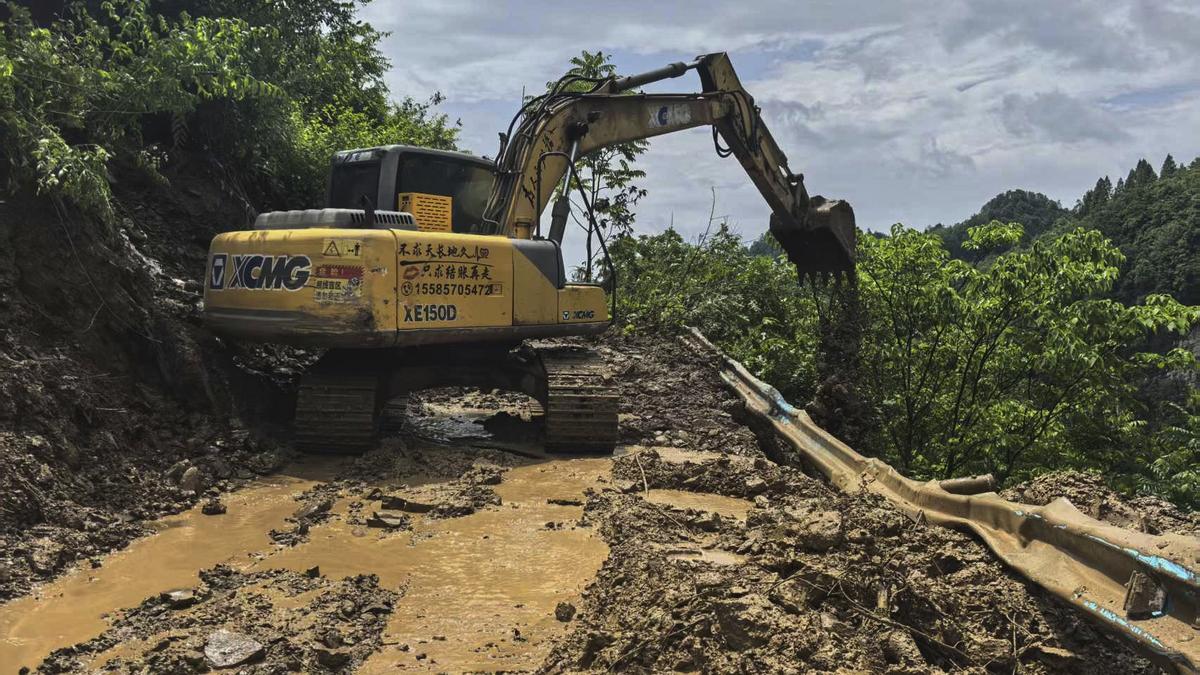At least four lives were tragically lost in the wake of devastating landslides that struck southwestern China’s Guizhou province. The province found itself gripped by a dire situation as 17 individuals remained trapped amidst the rubble and debris, their fate hanging in the balance. The unfolding events painted a harrowing picture of the challenges faced by rescuers in their race against time to reach those in need in the treacherous, mountainous terrain.
The landslides, which struck with merciless force, unleashed chaos in the early hours of that fateful Thursday. Reports detailed how two separate landslides ravaged parts of Dafang county, leaving a trail of destruction in their wake. The first landslide struck at approximately 3:00 a.m., followed by another at 9:00 a.m., amplifying the scale of the disaster. Changshi and Guowa townships in Dafang County bore the brunt of nature’s fury, with residents finding themselves suddenly engulfed by the overwhelming force of nature.
Aerial footage captured the aftermath of the landslides, revealing a landscape transformed by tragedy. The once picturesque village now lay submerged under a sea of brown mud, its fields blanketed, and the surrounding mountain shrouded in a veil of dense forest witnessing the devastation below. The scene was a stark reminder of nature’s unpredictable power and the vulnerability of human settlements in the face of such calamities.
In response to the crisis, Guizhou swiftly activated a Level II emergency response for geological disasters, recognizing the urgent need for coordinated action. The Ministry of Natural Resources in China mobilized a specialized team to the affected area, tasked with guiding and supporting the ongoing rescue operations. The magnitude of the disaster necessitated a comprehensive effort to locate and extract those stranded, with rescue teams urged to spare no effort in their mission to bring the missing individuals to safety.
However, the challenges confronting the rescue teams were formidable, with the remote and rugged terrain complicating their efforts. The treacherous landscape, characterized by its steep inclines and remote location, posed significant obstacles to the swift and efficient execution of rescue operations. Despite the unwavering dedication of the responders, the harsh reality of the situation underscored the inherent dangers and difficulties inherent in providing aid in such demanding conditions.
As the world watched the unfolding tragedy in Guizhou, experts and analysts weighed in on the broader implications of the landslides. The incident served as a poignant reminder of the ever-present threat posed by natural disasters, prompting a reevaluation of preparedness measures and response strategies. The need for enhanced monitoring and early warning systems to mitigate the impact of such calamities became a focal point for discussions on disaster risk reduction and resilience building in vulnerable regions.
In conclusion, the landslides in Guizhou stand as a solemn testament to the unpredictable forces of nature and the profound impact they can have on communities. The loss of life and the anguish of those still awaiting rescue serve as a stark reminder of the fragility of human existence in the face of natural disasters. As the search and rescue efforts continue amidst the challenging terrain, the incident in Guizhou underscores the pressing need for proactive measures to safeguard lives and livelihoods in the face of future calamities.









Leave feedback about this